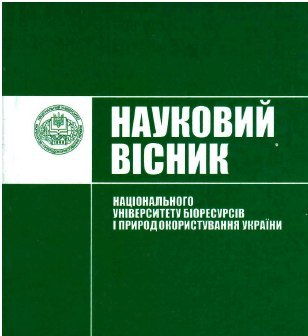Peculiarities of the expressive means use in English small form texts
DOI:
https://doi.org/10.31548/philolog0(263).2017.0208%20-%20215Abstract
In modern science text as a data carrier is recognized in its various forms to be a powerful tool of influence on the human mind. Expressiveness as a way to provide speech and language with specific distinctiveness gives the author an opportunity not only to more fully and accurately express their attitude to the described facts, but also to influence the listener, manage its perception and understanding of the text.
The article deals with peculiar features of small form texts, in particular expressive means used in these texts. It highlights the lack of unity in the approach to the interpretation and terminology definition of small form texts, their diversity and genre classification. It draws attention to the role of small form texts in shaping attitudes and interests of the audience. It is observed that the impact efficiency of small form texts depends on the use of means that appeal to hidden or explicit expectation of the audience: on the semantic level – direct call to action, exclamation, rhetorical question, presuppositions, contrast; metasemiotic –connotative, associative value; metametasemiotic – psychoanalytic motivation and performance by means of suggestion and persuasion. The analysis was provided to trace the connection between linguistic and stylistic means used in various small form texts and their purpose – to increase the emotional impact on the reader, to draw the attention to the text, to inform about the events or facts.
It is determined that the use of certain expressive means in small texts is predetermined by their genre affiliation and various functional purposes. In texts, such as ads, posters, notes, summaries, that are intended to inform the audience about a particular event, oriented to fast perception of information, tropes and stylistic devices are used relatively rarely. Other types of small form texts such as small announcements, annotations, and mini-reviews, advertisements, comic lyrics are often enriched with expressive means of the language, since they are directed not only to create an objective picture of reality, to provide comprehensive understanding of the subject of conversation (as in analytical genres), but what is important, to form a certain (usually positive) attitude, therefore, to stimulate the reader of the text to certain actions.
References
Babenko, O.V. (2013). Problematyka maloformatnykh tekstiv: zhanr prytchi v suchasnii literaturi [Issues of small-format texts: the parable genre in modern literature].Proceedings of National University “Ostroh Academy”. Series: Philological, 38, 147-148.
Vakhytova, H. V. (2007). Sposoby peredachi vnutrenney ekspressivnosti teksta [Methods of conveying the internal expressiveness of the text]. Ufa, 30.
Gridin, V. N. (1990). Ekspressivnost [Expressiveness]. Moskow: Sovetskaya entsiklopediya, 591.
Kozub, L. S. (2005). Sotsiolingvistichni osoblyvosti prosodychnoyi organizatsiyi tekstu angiyiskoyi komertsiynoyi telereklamy (eksperymentalno-fonetychne doslidzhennya) [Sociolinguistic Peculiarities of the Prosodic Organization of English Television Commercials: An Experimental Phonetic Study]. Zaporizhia, 226.
Leontev, A. A. (1969). Yazyk, rech, rechevaya deyatelnost [Language, speech, speech activity]. Moscow: Prosveshchenie, 214.
Lomonosova, E. S. (2015). Zhanrovyie osobennosti tekstov maloyi formy [Genre peculiarities of small texts]. Universum: Philology and art history: an electronic scientific journal, 3-4 (17).
Lomonosova, K. S. (2013). Teksty maloii formy: movnostylistychnyy aspekt [Small texts: linguistic stylistic aspect]. Herald of Lviv University. Series: Journalism. 38, 325–333.
Lomonosova, K. S. (2016). Funktsionalno-komunikatsiyna systema malykh tekstovykh form u mas-media: struktura i typolohiya (na materiali presovykh ta internet-vydan) [Functional and communicational system of small texts in media: structure and typology (based on press and Internet publications)]. Kiev, 20.
Matveeva, T. V. (1986). Leksicheskaya ekspresivnost v yazyike [Lexical expressiveness in language]. Sverdlovsk: Publishing house in Uralsk State. Un., 91.
Panchenko, K. I. (2013). Linhvistychni osoblyvosti tekstiv maloyi formy [Linguistic peculiarities of small texts]. Herald of National Ostrog akademiya. Series: Phylological, 38, 213-214.
Prokopenko, N. M. (2016 ). Mali tekstovi formy humorystychnoho dyskursu [Small text form humoristichnoho discourse]. Philological treatises, Vol.8,1, 54-61.
Taranenko, L. I. (2016). Prosodychni zasoby aktualizatsiyi anhliyskykh folklornykh tekstiv maloyi formy (eksperymentalno-fonetychne doslidzhennya [Prosodic Means Actualizing English Small Form Folk Texts (an Experimental Phonetic Study)], 21-22.
Akademichnyy tlumachnyy slovnyk ukrayinskoii movy [Academic Explanatory Dictionary of the Ukrainian language]. Available at: http://sum.in.ua/s/
Yazykovyie sredstva sozdaniya ekspressivnosty [Language means for creating expressivemess]. Available at: http://bibliofond.ru/view.aspx?id=887638#1
Isherwood, Ch. Sly Alchemy From That Lamp. Available at: https://www.nytimes.com/2014/03/21/theater/aladdin-tweaks-the-disney-formula-with-breezy-insouciance
List of Commercial Slogans. Available at: https://www.scribd.com/doc/59453217/List-of-Commercial-Slogans
Szczepanik, M. Multimodal Discourse Analysis of Print Advertisements: Neologisms and Metaphors in Advertising: Master"s Diploma Thesis. Available at: http://is.muni.cz/th/282175/ff_m/M.A.Thesis_plus_App.pdf
TV-Buzer. Available at: http://www.tvbuzer.com/tv-shows/Doctor-Who
Downloads
Published
Issue
Section
License
Relationship between right holders and users shall be governed by the terms of the license Creative Commons Attribution – non-commercial – Distribution On Same Conditions 4.0 international (CC BY-NC-SA 4.0):https://creativecommons.org/licenses/by-nc-sa/4.0/deed.uk
Authors who publish with this journal agree to the following terms:
- Authors retain copyright and grant the journal right of first publication with the work simultaneously licensed under a Creative Commons Attribution License that allows others to share the work with an acknowledgement of the work's authorship and initial publication in this journal.
- Authors are able to enter into separate, additional contractual arrangements for the non-exclusive distribution of the journal's published version of the work (e.g., post it to an institutional repository or publish it in a book), with an acknowledgement of its initial publication in this journal.
- Authors are permitted and encouraged to post their work online (e.g., in institutional repositories or on their website) prior to and during the submission process, as it can lead to productive exchanges, as well as earlier and greater citation of published work (See The Effect of Open Access).

